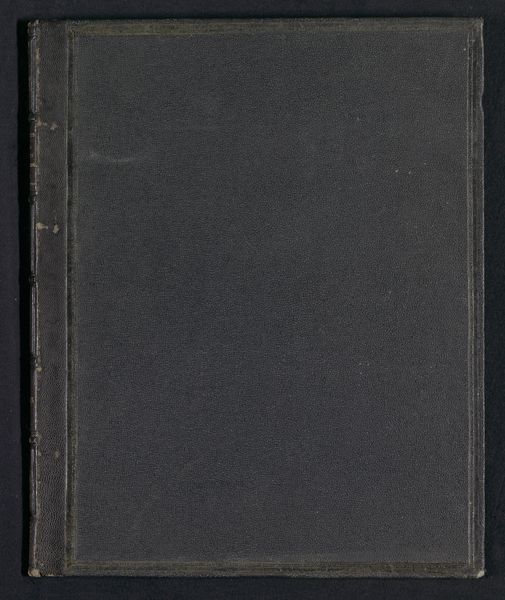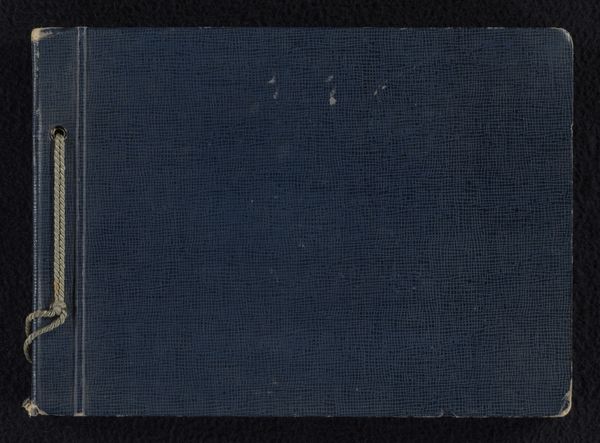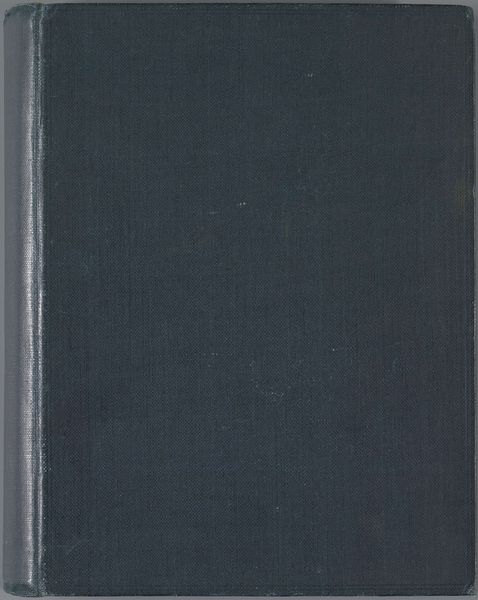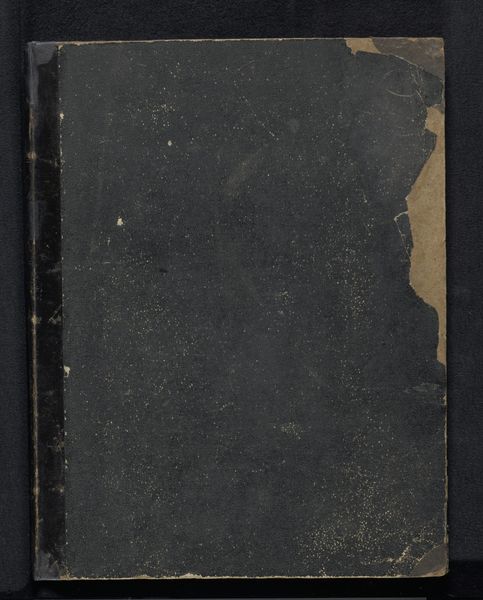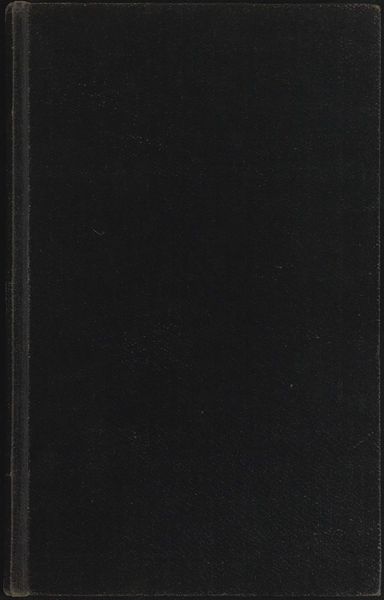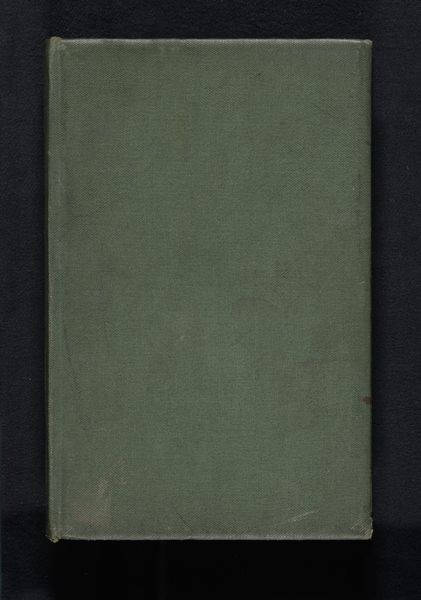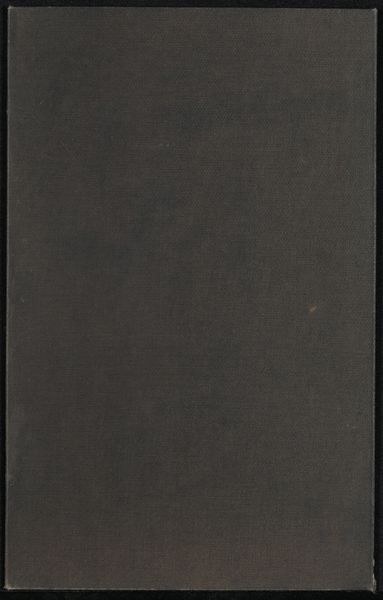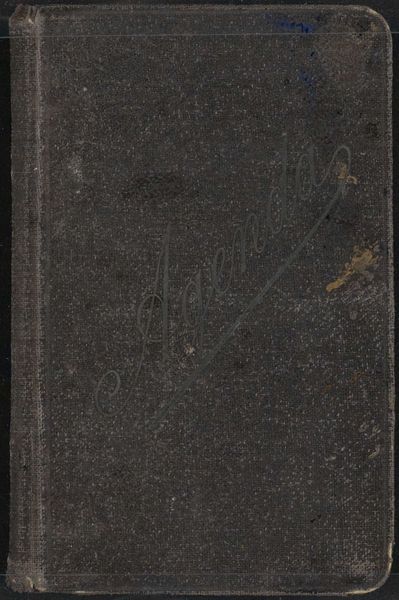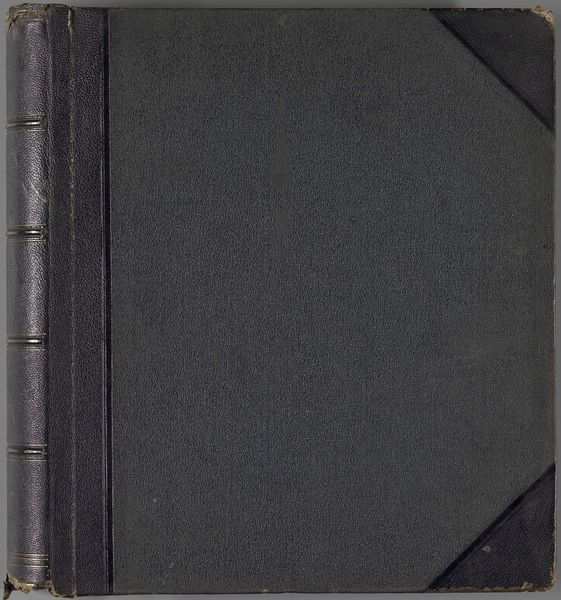
Fotoalbum met foto's van vermoedelijk Volendam, portretten in klederdracht en scènes in schildersateliers c. 1900 - 1910
0:00
0:00
photography, albumen-print
#
portrait
#
still-life-photography
#
art-nouveau
#
paper texture
#
photography
#
albumen-print
Dimensions: height 257 mm, width 205 mm, thickness 32 mm, width 401 mm
Copyright: Rijks Museum: Open Domain
Editor: Here we have a photo album, "Fotoalbum met foto's van vermoedelijk Volendam, portretten in klederdracht en scènes in schildersateliers," dating from around 1900 to 1910, likely composed of albumen prints. Initially, the book's severe presentation of its dense surface reads to me almost as a monolith or gravestone. How do you approach interpreting this silent block of images? Curator: Let's consider the texture. The book's cover shows clear wear, the textile visibly rubbed and slightly discolored, indicating extensive handling. The materiality becomes significant. Each crease and mark speaks to its function as a keeper of memories. What impression do you get from the singular colour? Editor: A somber, reliable depth, I’d say. The overall tonality makes the whole composition monumental. Its starkness suggests gravity and an earnest quality that many period portrait albums shared, at least when visually closed off from its intended context of its inner world of photography. Given your expertise in visual formalism, is there more to derive simply from the way the texture is structured? Curator: The woven texture provides a fascinating contrast to the presumed smoothness of the photographs inside, a tactile quality implying intimacy. And notice how the plainness focuses your attention on its shape, directing the eye inward, like a door partially concealing and yet also promising some meaning behind. Are we correct to presume what it covers? Editor: Well, this exercise highlights how a purely formal reading still creates possibilities. You’ve made me think more about its nature as an object itself and what meanings might be communicated via it texture, color, and general state, far beyond only its function. Thank you for illuminating a fresh, layered way to view this photo album. Curator: And you've encouraged me to consider the element of time—the effects of history physically present. A rich interpretation, I believe, stemming purely from close attention to form.
Comments
No comments
Be the first to comment and join the conversation on the ultimate creative platform.
